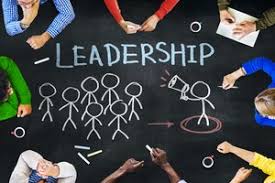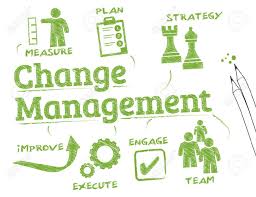
Not all Leadership is about changing and challenging People’s Vision of the Future
Order Instructions:
INSTRUCTIONS ATTACHED IN FILE.
the assignment need 8-10 reference list in APA format, and if u need to quote example, pls don’t use Australia, use HK style. Thank you.
SAMPLE ANSWER
“Not all Leadership is about changing and challenging People’s Vision of the Future”
Effective leadership and management systems are the key components for success in any organization, regardless of its core business. While some people use the terms leadership and management interchangeably, the two are distinctly different and the present organizations should have effective leaders and managers (Stanley, 2012). Effective leadership is instrumental in providing the right direction to an organization by transforming the minds of people and pushing the organization forward in the right path to achieving organization’s set objectives (Stanley, 2012). Leaders, therefore, provide direction and inspiration to the teams they lead, and play a visionary role. Management, on the other hand, is majorly about marshaling of organization resources appropriately to ensure organization’s stability (Kotter, 2009). The health care department is vast involving numerous departments and it is becoming increasing necessary for clinicians to play a leadership role in their profession, at different levels or departments, so as to apply their expertise in influencing and bringing desirable change as well as effectively managing the changes in the field. Leadership in clinical practice or simply clinical leadership, therefore, involves enabling clinicians to play a central role in setting goals, providing direction, influencing decisions and outcomes, and managing change so as to improve quality of service provided to patients, and better the entire healthcare sector (Swanwick & Mckimm, 2011). This essay shall critically analyze various management and leadership theories, with close reference to leadership and management in the field of healthcare, critically compare management and leadership to oppose the notion that “not all leadership is about changing or challenging people’s vision of the future.
Since the 18th century to date, various management theories have been proposed by various researchers in the field of management (Kouzes & Posner, 2007). The earliest, classical theories on management were the scientific management theory, bureaucratic theory and administrative management theory. These classical approaches to management emphasized the managers’ sole role in determining how tasks are to be performed, with employees only performing what the managers have suggested (Kouzes & Posner, 2007). They also emphasized strict supervision of workers and division of labor especially on the skilled labor force. The scientific management theory by Fredrick Taylor, for example, suggested that tasks in organization can be standardized, measured accurately by the managers and rewards and punishment appropriately apportioned. The classical theories have no place in the healthcare sector since it is difficult for a manager in healthcare sector to determine tasks without the input of nurses, doctors and other healthcare providers. Strict supervision is also not ideal in the health care sector since clinicians, nurses and doctors work effectively with minimum supervision (Stanley, 2012). Again, this theory was most applicable for organizations with routine activities and assembly lines. Clinicians and nurses usually face new medical situations and methods of treatment usually change from time to time (Kouzes & Posner, 2007). The classical theories, due to their ineffectiveness and inapplicability in all organizations, gave way to the rise of contemporary management theories. These include the contingency theory, the system approach theory and the chaos theory (Kouzes & Posner, 2007). The contingency theorist fronted the idea that managers should examine and consider all aspects of a problem before making a decision (Dickenson, 2008). According to this theory, there is no single best way in which managers should structure an organization since circumstances organizations face call for different approaches to decision making. This approach has some applicability in the health care system. Clinicians and nurses, in the course of providing services to patients, face new challenges as sometimes patients can come with a condition that requires unique ways of handling it. There are cases, for example, where a patient may develop resistance to drugs or a therapy method and so new and effective approach that are not usually applicable, may have to be considered at some point. The theory provided for the seeking of comprehensive solutions to solving organizations problems by mangers, which is an applicable factor to be considered by those heading healthcare sector. Healthcare leaders need to look at situations from all points of view to get a comprehensive solution. The system approach theory, shifted focus to the systems within an organization. In this approach, systems refer to the interrelated parts of an organization. It recognizes the fact that organizations are made up of different complex systems which are related and depend on each other (Garrubba, Harris & Melder, 2011). Theorist of this theory view organizations holistically, direct attention to entire tasks performed in an organizations and show how structure and the human resources can be put together for effective results. The interrelated systems could include workers, finance, technology, and raw materials. If one part of the system is removed, then the organization may not work properly. ( Garrubba et al, 2011). This theory has its way in the modern healthcare sector. Most hospitals and other health care facilities are composed of complex systems ranging from various employees such as nurses, clinicians and doctors, finance that run the facilities, several units such as casualty, emergency section, theatres for operation among many other interrelated systems. It will be difficult for example to withdraw finance from health care facilities, and expect them to run. The healthcare facilities cannot operate with doctors only or nurses only. All health professionals work in an interrelated manner for quality service delivery to patients. Management in the health care profession therefore, needs to look at the departments they are heading from a broad and comprehensive point of view. All departments are equally important and should be managed effectively as they depend on each other (Northhouse, 2007). The chaos theory fronts the idea that organizations are faced with chaotic situations, just like the world today is chaotic and full of unpredictable events. Just like external environment is chaotic, so are organizations as they are frequently faced with events that are beyond their control. If the events are not properly managed, then the organization collapses (Northhouse, 2007). We see the applicability of this theory in today’s health care management where professionals of the health care sector, especially those heading it, need to be prepared and able to deal effectively with unlikely events such as outbreak of rare infectious diseases.
Various leadership theories have also been fronted that explain the role and importance of leadership. Leadership in organizations involves superiors inspiring, influencing and directing the behaviors and minds of the team one is leading to adopt and follow a particular path in achieving desired goals (Northhouse, 2007). The theories have since evolved from the great man theory, trait theory, and behavioral theory, to contingency, situational, participative, transactional, and transformational leaderships. The great man theory is the point of view that leaders are born and possess certain desirable characteristics for leadership, such as communication skills, confidence, intelligence and ambition (Edmonstone, 2009). This, together with the trait theory assumes that leaders are born with traits that place them above the average persons, and must have appropriate combination of the desirable traits (Pauly, Schreiber, MacDonald, Davidson, Crickmore, Pinelli, Regan & Hammond, 2004). For the healthcare professionals, the traits in this theory, for instance intelligence, composure even under pressure, and courage, are important for effective clinical leadership since the profession requires right thinking in every aspect of decision making. The theory, however, is not effective in explaining situations where some individuals possess the desirable characteristics yet they are not leaders. Behavioral theory, on the contrary, was of the assumption that leaders are not necessarily borne, but rather, an individual can be shaped and trained to become an effective leader. Successful leadership is based on certain behaviors that can be learned through observation, in other words, leaders can be made. This theory implies that individuals not possessing leadership qualities can learn and be taught on how to be great leaders (Pauly et al, 2004). In clinical leadership, this implies that they should not leave leadership in the profession solely for the management only, but they can also learn to be great leaders through observing what great leaders do and learning from them. So nurses, clinicians and even doctors have the obligation to participate in leadership in this profession to steer change and lead the sector to a better tomorrow. Again, the major concern of leaders in this theory is the concern for people (Kouzes, 2007), a concept that healthcare professional can utilize because concern for patients’ wellbeing is necessary. The contingency and situational theories bear great semblance (Bass, 1994). Both theories are of the assumption that there is no single best way of dealing with a situation correctly. Contingency theory is, however, broader in its perspective and views success in leadership as an interplay of factors such as the type of leadership style, leader’s ability, nature of the followers and the situation at hand. Situational theory focuses on the situation itself and suggests that different situations require certain leadership styles (Northhouse, 2007). The healthcare profession, being an intricate and a delicate one since it involves patients’ health, requires looking at situations in broader perspectives. Effective clinical leadership entails having a broad view of situation, controlling and inspiring the team you are leading and applying a suitable method of decision making based on analysis of the situation to direct change (Garrubba et al, 20011). The transactional leadership is yet another theory, based on the assumptions that rewards and punishment are the primary motivators for individuals, systems function effectively in the presence of a clear defined chain of command, and that subordinate’s main role is to follow what their managers or leaders tell them (Swanwick et al, 2011). The application to this theory in clinical leadership is that clinicians and nurses need to follow and depend on their leaders in their respective departments, and be aware of the consequences in cases of protocol breaches set by their leaders. Participatory leadership involves encouraging other members such as subordinates and other stakeholders in a team, to take part in decision making, instead of assuming autocratic powers (Edmonstone, 2009). It entails joint decision making. The clinical leadership alike should allow for full participation of peers and other stakeholders in decision making that affect the sector. For change to be realized, effective leadership requires the various views of different team members. An important style of leadership in generating visions for change in organizations is the transformational leadership. This kind of leadership style assumes that individuals usually follow someone who inspires them and has great vision ( Northhouse, 2007). It involves coming up with visions and energizing followers to get things done. These kinds of leaders stand out, are motivated, and possess unswerving determination towards success and change. Thus, clinical leaders and other leader in various departments of health care should in fact be transformational leaders. This can lead to adoption of many reforms in the health sector that will benefit the entire profession and those in need of health care services.
Leadership and management are two distinctive concepts and leaders and manager play different roles in organizations. Leaders are agents of change and movement through creation of visions, and influencing followers towards goal achievement while management involves planning, harmonization and proper allocation of resources, resulting into order and stability in organizations (Garrubba et al, 2011). Leadership also tends to focus on leading people or followers who follow them voluntarily. Leaders do not necessarily have subordinates. Management on the other hand put priority on structures and personnel, and focuses more on goals and how work and subordinates are managed. The perception about risk also differ, with leadership and leaders tending to take risks, while managers are averse to risk and would do all possible things to avoid it. Leadership focuses on long-term visions, readily travels on new roads, and may sometimes break the rules to achieve the desired change. Management, on the other hand focuses on set objectives, designs rules that must strictly be followed to achieve desired results. Clinical leaders need to be aware of these differences so that the clinicians and nurses with leadership roles effectively guide their followers to successfully implement desired future changes (Kotter, 2009).
In conclusion, healthcare professions need to engage even more in assuming leadership roles in their profession to steer future positive changes in the department. This is because it is leaders, not managers, who have the role of designing a clear vision of an organization, and establish the right path through he or she will lead his or her followers. Leadership is, therefore, aimed at changing people’s vision of the future since an effective leader is able to influence the minds of his followers and together, move towards the new, desired change.
References
Bass B, & Avolio B. (1994.) Improving Organizational Effectiveness Through Transformational Leadership. Thousand Oaks: Sage; 1994.
Dickenson H, & Ham C., (2008). Engaging Doctors in Leadership: A review of the literature. Birmingham: NHS Institute for Innovation and Improvement, University of Birmingham and Academy of Medical Royal Colleges.
Edmonstone J. (2009). Clinical leadership: the elephant in the room. Int J Health Plan Manage;24(4):290-305.
Garrubba M, Harris C and Melder A. Clinical Leadership: A literature review to investigate concepts, roles and relationships related to clinical leadership. (2011) Centre for Clinical Effectiveness, Southern Health, Melbourne, Australia.
Kotter, J. (2009). A force for change: How leadership differs from management. New York: Free Press
Kouzes M. James & Posner Z. Barry, 2007. The leadership challenge, 4th edition.
Northhouse, P. (2007). Leadership theory and practice. Thousand Oaks, CA: Sage Publications.
Pauly, B., R. et al. (2004). “Dancing to Our Own Tune: Understandings of Advanced Nursing Practice in British Columbia.” Canadian Journal of Nursing Leadership 17(2): 47–59. Retrieved from <http://www.longwoods.com/content/16346>.
Roots, A. and M. MacDonald. 2008, September 17–20, 2008. 3 Years Down the Road: Exploring the Implementation of the NP Role in British Columbia, Canada. Poster presented at the 5th International Council of Nursing, International Nurse Practitioner/Advanced Practice Nursing Network (INP/APNN) Conference in Toronto
Stanley J. D., (2012). Clinical leadership and innovation. Journal of Nursing Education and Practice, 2(2), 119-126
Stedman, N. (2005). Leading teams. SEAL 2005 – Individual Advisory Member Development. Retrieved on November 26, 2008 from: http://extensioneducation.tamu.edu/SEAL/LeadingTeams-LP.pdf.
Swanwick T. & Mckimm J., (2011). What is clinical leadership and why is it importance? The clinical teacher journal, 8(2), 22-26
We can write this or a similar paper for you! Simply fill the order form!












